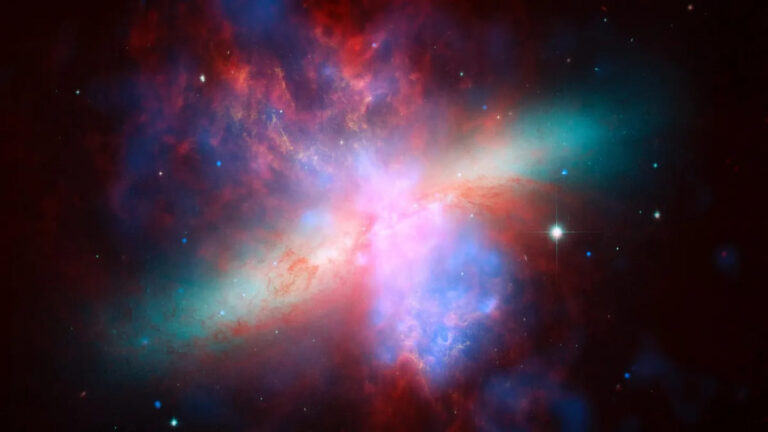Last November, a European satellite caught a blink of something extraordinary—a burst of gamma rays that, while lasting only a fraction of a second, was so significant that it immediately drew the global astronomical community’s attention. This fleeting flash turned out to be one of the universe’s most elusive and powerful phenomena: a giant eruption from a magnetar, an incredibly magnetic type of neutron star, located in a distant galaxy.
A Flash Across Space
Gamma rays are beams of high-energy radiation that can occasionally reach Earth from deep space. First observed in the 1960s, these emissions are often traced back to the cosmos’ most dramatic events, such as the merger of neutron stars—dense remnants of exploded supernovae. However, the event captured in November didn’t match the usual patterns.
Typically, gamma-ray bursts are followed by a “remanent emission” across various wavelengths like X-rays, optical, and radio, lasting hours or days. Sandro Mereghetti, a researcher at the Institute of Space Astrophysics and Cosmic Physics in Milan, noted the absence of such remanent emissions, which hinted at an uncommon source.
Unraveling the Mystery
Further analysis led to an intriguing hypothesis. The source of the gamma-ray burst was likely a magnetar eruption. Magnetars are a rare type of neutron star with incredibly intense magnetic fields, thousands of times more powerful than those of ordinary neutron stars. These magnetic fields are so strong they influence the star’s very structure, occasionally snapping and releasing massive amounts of energy.
“Magnetars harness energy from the decay of their magnetic field,” Mereghetti explained. This decay process generates significant heat, making these objects not only magnetic but also extremely hot, capable of producing giant eruptions.
For context, a magnetar eruption can release in just one-tenth of a second as much energy as our Sun emits over a million years.
A Cosmic Rarity
Despite their dramatic nature, giant magnetar eruptions are incredibly rare. “While we detect gamma-ray bursts about once a month, over the last fifty years, only three such giant eruptions have been identified among the 100 billion stars of the Milky Way,” Mereghetti shared. And spotting these eruptions outside our galaxy is even more challenging due to the need for precise instrument orientation and the ability to distinguish their radiation from other cosmic sources.
However, the eruption detected last November came from the galaxy M82, located 12,000 light-years away—a discovery made by Mereghetti and his team, marking a significant milestone.
Fortuitous Discovery
The identification of this eruption as originating from M82 was somewhat serendipitous. The INTEGRAL satellite, set to re-enter Earth’s atmosphere soon with no immediate replacement planned, was already positioned near M82 when the burst occurred. This galaxy, due to its interaction with another galaxy, has an unusually high number of massive, fast-living, and luminous stars, making it a hotspot for such rare cosmic events.
“This discovery was not just a stroke of luck but also a testament to our preparedness and the capabilities of our observational technologies,” said Mereghetti. As the INTEGRAL satellite continues to monitor this region, astronomers hope to catch more such giant eruptions, which could provide invaluable data on the physical properties of intense magnetic fields and the life cycle of stars.
Mereghetti concluded, “Stars are born, live, die, explode, and create new stars. There’s a cycle, almost a biology to the universe, and magnetars are a critical part of the evolutionary structure of star life.”
This discovery not only emphasizes the dynamism of our universe but also serves as a reminder of the endless mysteries waiting to be uncovered beyond the night sky.






